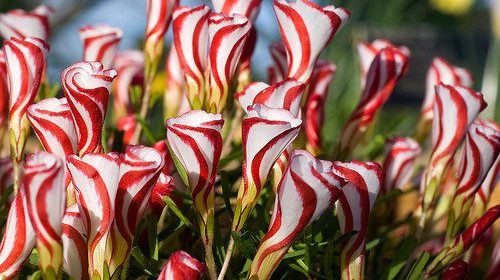Tuesday
Scientists Discover First ‘Virological Penicillin’ in Japanese Honeysuckle Lonicera japonica
Honeysuckle (Lonicera japonica) is a well-known Chinese herb. In Traditional Chinese Medicine, it has been used to effectively treat influenza infection for centuries.
Several previous studies have confirmed that the herb, usually consumed in the form of a tea, can suppress the replication of influenza virus.
However, the active anti-viral components and the mechanism by which they block viral replication have remained unclear.
Now, a team of researchers headed by Dr Chen-Yu Zhang of Nanjing University in China has identified MIR2911 (honeysuckle-encoded atypical microRNA2911) as the first active component directly targeting various influenza viruses, including the swine flu H1N1, highly pathogenic avian H5N1 and H7N9 infections.
MIR2911 represses influenza viruses by targeting PB2 and NS1, two genes that are known to be required for influenza viral replication.
With its broad-spectrum, anti-viral activity against influenza viruses, MIR2911 and MIR2911-containing honeysuckle tea may represent a new effective therapeutic strategy that can be used to subdue deadly infections.
“It is important to note that since Alexander Fleming discovered penicillin nearly a century ago, antibiotics have been developed to target various bacterial infections and have saved the lives of millions of people,” the scientists wrote in a paper published in the journal Cell Research.
“Unfortunately, no natural product that is effective against viral infection has been identified thus far.”
“We suggest that as the first natural product to directly target influenza A viruses, MIR2911 is the ‘virological penicillin’ that serves as a novel therapeutic and preventive agent against not only influenza A, but potentially also other types of viruses.”
Article Sources:
USA: http://www.sci-news.com/
USA: medicalxpress.com
UK: http://www.dailymail.co.uk
OZ: http://www.sciencealert.com.au/
Tea Source: Honeysuckle Tea
Seed Source: Seeds for Growing
...
Posted by
Garden Medusa
0
comments
![]()
Labels: holistic, Honeysuckle, honeysuckle tea, influenza, Japanese Honeysuckle, Jin Yin Hua, Jinyinhua, Lonicera japonica, medicinal herbs, medicinal plants, Scientists Discover, Suikazura, Virological Penicillin
Thursday
Black Vegetables and Black Flowers
Well..not completely black, but at least near black. Black Flowers have always had a mystery to them but black vegetable gardens are pretty much something we haven't heard of. They are even heirloom vegetables!
The darker the fruit or vegetable, the more
antioxidants (anthocyanin) it has, plus the near black shades of dark
purple to dark maroon make for a stunning display and great
conversation.
Posted by
Garden Medusa
0
comments
![]()
Labels: almost black flowers, almost black vegetables, anthocyanins, black botanical, black edibles, black flowers, black vegetables, dark purple, dark purple vegetables, goth garden, heirloom black edibles
Red and White Candy Cane Sorrel Oxalis
Oh how lovely!
This intriguing half hardy alpine produces crimson
striped, funnel shaped buds like tiny striped barbers poles! The
striking petals open to reveal pretty white flowers with crimson
margins. A fascinating talking point for a frost free greenhouse. In
exceptionally mild areas it can be grown outside at the front of borders
or in sheltered rockeries.
Grows up to 12" tall. Prefers full to partial sun. Blooms from July
until October, giving you months of enjoyment of this unique garden
sorrel.
Growing candy cane sorrel is simple. Candy cane oxalis flowers are native to capes of South Africa. This attractive member of the Oxalis family is sometimes forced in greenhouses for ornamental, holiday blooms.
When growing candy cane sorrel outside in the garden, the plant will exhibit blooms through most of the spring and sometimes into summer, depending on the location where it grows.
As with most members of the ornamental Oxalis family, the candy cane oxalis plant goes dormant in summer and begins a period of regrowth in fall.
Info about candy cane oxalis plant says it is hardy in USDA Zones 7-9, though it can grow as an annual in lower zones.
Candy cane sorrel bulbs (rhizomes) can be planted at any time the ground, provided it is not frozen.
Once candy cane sorrel bulbs are established, occasional watering and fertilization is all that is required when caring for candy cane oxalis.
You may remove dying foliage when the plant dies back for the sake of appearance, but it will wither on its own. Don’t despair that the candy cane oxalis plant is dying; it is just regenerating and will once again reappear in the garden.
This plant is grown from Bulbs! If you see seeds (likely from china) - don't buy them..seeds do NOT exist!!
Posted by
Garden Medusa
0
comments
![]()
Labels: Candy Cane Sorrel Oxalis, hard to find plants, Oxalis Versicolor, rare bulbs, unusual bulbs, unusual plants, unusual seeds














